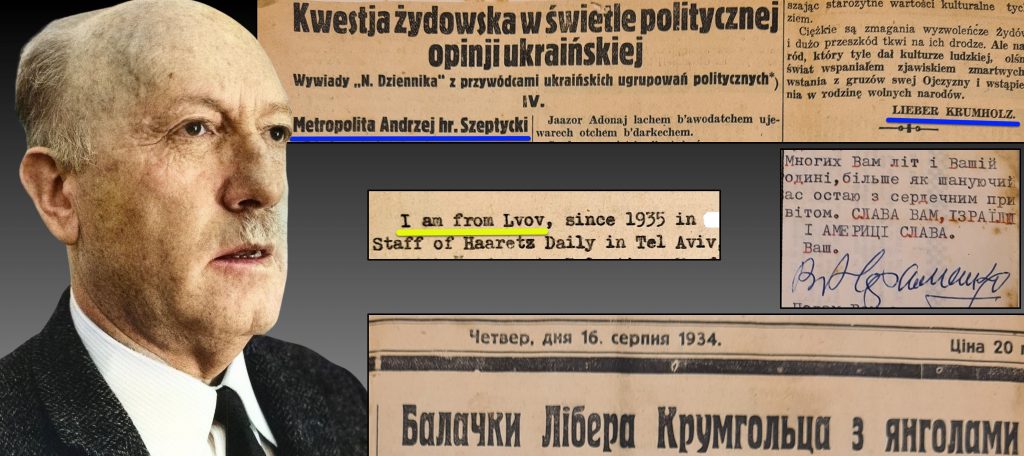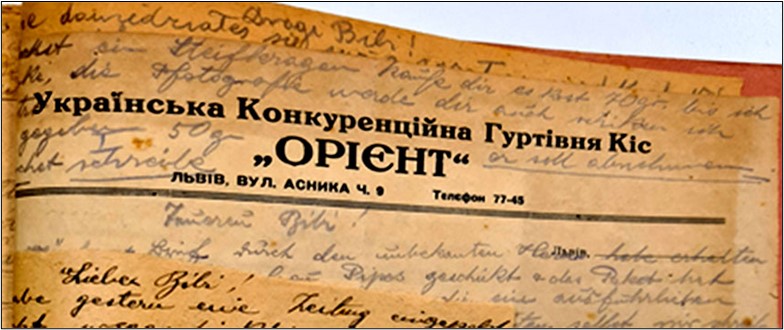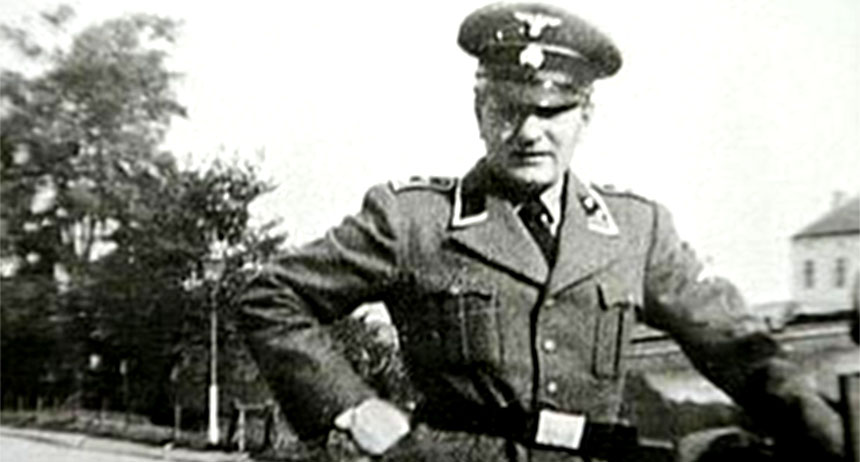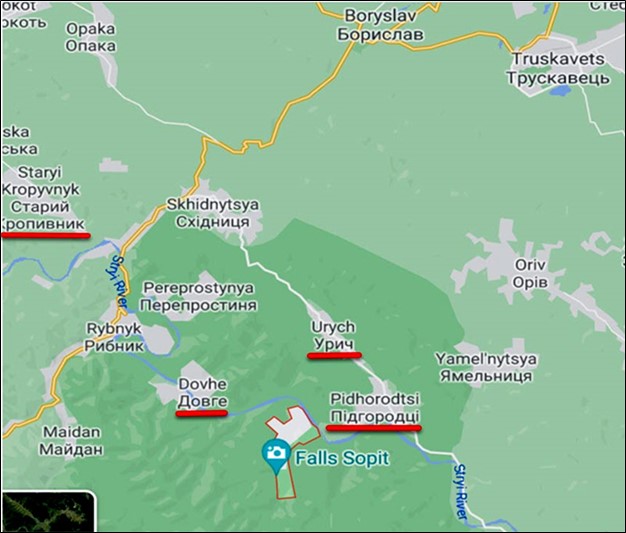Bibi from Lviv: An undeservedly forgotten hero of the Jewish-Ukrainian dialogue
My immersion in this man’s biography began by accident. I discovered a brief reference in an article stating that Metropolitan Andrei Sheptytsky had expressed support for Zionism and the creation of a Jewish state in the Land of Israel. But what did the head of the Ukrainian Greek Catholic Church say specifically about the Jewish national movement, and when and in what context?
These questions were answered by Dr. Liliana Hentosh from Lviv, the author of many books and studies about the life and work of Andrei Sheptytsky. She sent me a Ukrainian translation of an interview with the metropolitan, noting that the surname of the Jewish journalist who spoke with Sheptytsky is Krumholz.
Then I found some material about this individual, who eventually became one of the most experienced and reputable journalists in Israel.
A great discovery for me was the study of the personal collection of Lieber Krumholz (1913–1993), who is known in Israel as Haviv Knaan. When I was researching this journalist’s documents and letters in the archives of Tel Aviv University, I realized that Knaan is an undeservedly forgotten hero of the Jewish-Ukrainian dialogue.
He brought his immense interest in and respect for Ukraine and Ukrainians with him from Lviv to Jerusalem and Tel Aviv. He was an intellectual who appealed to Ukrainians and Jews to speak one truth about the most painful topics of their shared history.
A Ukrainophile Jew
“I am from Lviv. My father was an outspoken Ukrainophile. He sent my younger brother to the Ukrainian gymnasium in Lviv so that he would acquire a knowledge of Ukrainian history and literature. For three years, he was the only Jew there,” Knaan wrote about his family.
His father, David Krumholz, was a businessman. In a Polish-speaking environment, David, like a “white crow,” stood apart from others by virtue of his sympathy for Ukrainians, and he transmitted his views to both of his sons.
Within the family circle, little Lieber was known affectionately as Bibi. This nickname stuck with him into adulthood, as is evident from his parents’ correspondence with him.
Lieber (Bibi) Krumholz had dreamed of becoming a journalist since his youth. By 1932 the 19-year-old Krumholz had already published an article about another Lvivite, the famous Hebrew poet Uri Zvi Greenberg, who came from Jerusalem to visit his parents in Lviv.
In the summer of 1934, the young Krumholz had accomplished what no one in the Jewish press had ever done before. In a Zionist periodical, he publishes, in Polish, a series of his six interviews with civic and political leaders of Ukrainian Galicia, querying them about their attitudes on the Jews, Zionism, and antisemitism. This series of publications sparked a wave of reactions in the Polish and Ukrainian press and brought renown to the young journalist.
One of the most important of these interviews was the one with Metropolitan Andrei Sheptytsky, which Krumholz published on 16 July 1934. I should note that the elderly head of the Ukrainian Greek Catholic Church spoke very warmly with the 21-year-old Jewish journalist.
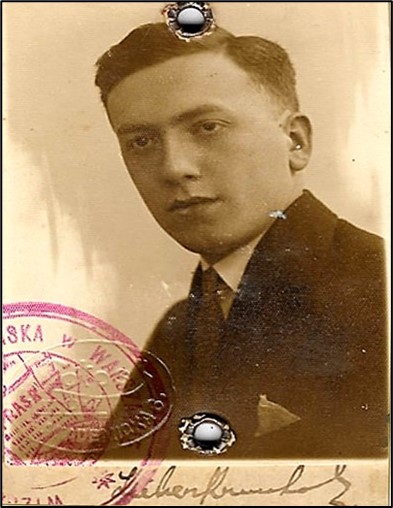
Krumholz went on to complete his studies at the Higher School of Journalism in Warsaw.
In August 1935, before his departure to the Land of Israel, Krumholz continued to maintain his interest in Ukrainian topics. He published an article in the Polish-Ukrainian Bulletin about plans to convene a World Ukrainian Congress, a project that never came to fruition.
Earlier, this periodical had published an article about his Jewish-Ukrainian relations in the cooperative movement, which presented examples and problems in the business cooperation between the two peoples on the territory of Galicia.
Krumholz was one of the founders of the Lviv-based Society of Friends of the Hebrew University of Jerusalem, and he regularly wrote about the meetings held by its activists.
In 1935 Krumholz immigrated to the Land of Israel as a student at this university.
In his new country, he adopted a new name: Haviv (“beloved” in Hebrew) and the surname Knaan.
In 1936 an Arab revolt began in British Palestine, and a wave of anti-Jewish pogroms swept throughout many regions of the country. Knaan wants to take part in Jewish self-defense. He joins the British police as a volunteer, completes a course of studies at the police academy, and in 1937–39 he is the commander of a police station in the Jewish quarter in Jerusalem’s Old City.
Knaan served twelve years in the police and was instrumental in creating the police force of independent Israel.
In 1939 and 1940, Krumholz’s parents, David and Malka, wrote to their son from now-Soviet occupied Lviv. Here is another Ukrainian feature of the Krumholz family: Problems with the availability of paper appeared after the Bolsheviks’ entry into Lviv, which is why his parents wrote “Dear Bibi” on the letterhead of a Ukrainian wholesale warehouse.
In the summer of 1941, the correspondence between Jerusalem and Lviv was interrupted.
Knaan used his connections with the Catholic Church and asked representatives of the Vatican in Jerusalem to contact Nazi-occupied Galicia in order to find out about his family. It may be assumed that the Vatican turned to the representatives of the Ukrainian Greek Catholic Church in Lviv who knew and remembered the younger Krumholz because of his interview with Metropolitan Andrei.
The sad finale to these efforts was a brief reply from the Vatican’s information bureau in Jerusalem in July 1943: David Krumholz of 34 Tereza Street in Lviv “left this address, and it is impossible to obtain more precise information.”
At the time, Knaan did not know that his father, mother, grandfather, grandmother, uncle and aunt had already died in Lviv.
It was only in late 1944 that Knaan learned from a Jewish survivor who had miraculously made his way from Lviv to the Land of Israel that the murderer of his family members was a close friend of the family.
The Menten affair
In 1923 a young Dutch businessman named Pieter Menten arrived in Lviv. He started a business with Isaac Pistyner, Krumholz’s uncle, his mother’s brother. The Dutchman leased out a forested tract for logging in the Stryi River Valley, near the village of Pidhorodtsi, south of Boryslav.
Menten was friends with members of both the Krumholz and Pistyner families. The young Lieber adored his older Dutch friend, seeing in him an example of a cultured European.
However, in 1935, Pistyner and Menten became embroiled in a conflict over property. The court ruled in Pistyner’s favor, and Menten came to harbor a grudge against his Jewish former partner. When the Red Army entered the region in 1939, the Dutchman lost all his land holdings, and he fled to Cracow, where he voluntarily joined the Nazis.
In July 1941, Pieter Menten returned to Lviv in the uniform of an SS non-commissioned officer with the rank of sergeant.
Together with a unit of SS men, the first thing he did was to head to the village of Pidhorodtsi, where Pistyner’s house was located. Failing to find his ex-business partner, Menten shot two hundred Jews of this village on 7 July. Later, Menten’s unit continued to carry out mass shootings of Jews in neighboring villages (underlined in red on the map below—S.B.]
Menten came to Lviv and personally shot Krumholz’s father and mother. Pistyner died of typhus in the Lviv ghetto in 1942.
Menten methodically robbed the apartments of wealthy Jews and Poles—collectors of art and antiquities—whom he had known personally in Lviv before the war. In 1942 he brought out three trainloads of art from Lviv to Holland. After the war, he lived for thirty years in a forty-room mansion.
In 1976 a Dutch newspaper reported that the “distinguished collector Pieter Menten [had] decided to have Sotheby’s auction off part of his collection.” This information was accidentally spotted in Israel by Haviv Knaan. He immediately informed Hans Knoop, the editor of the weekly Accent, that Menten was the bloody killer of his family and hundreds of Jews in the Lviv region.
Israeli and Dutch journalists launched an investigation and Pieter Menten was brought to trial.
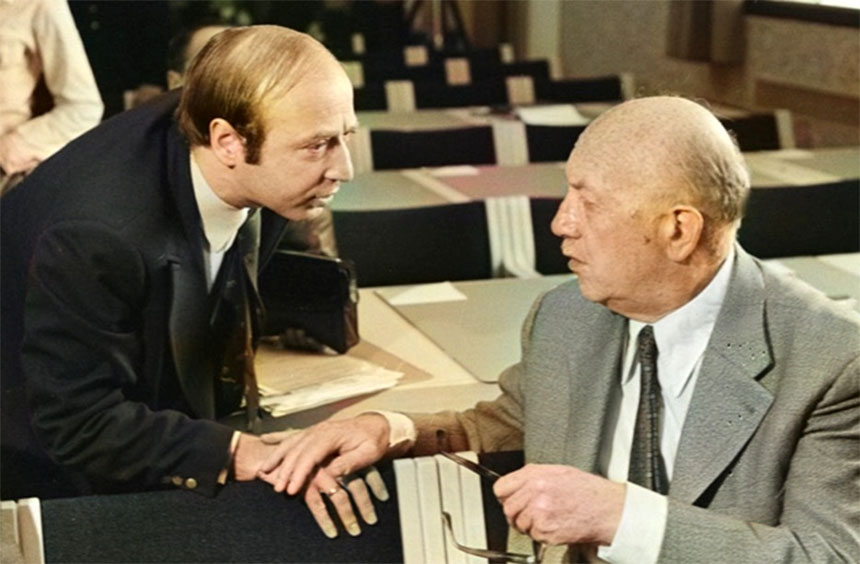
The Dutch prosecutor’s office obtained information from Knaan about the shootings that had taken place in several villages along the Stryi River. In 1977 the Dutch exhumed the victims’ bodies in the villages of Pidhorodtsi and Urych. Hundreds of remains were found there, including those of children. Ukrainian residents of these villages gave statements about the killers of the Jews: They recognized Menten, who had visited these localities on business before the war.
Menten was sentenced to ten years in prison. He served six years and died shortly after being released.
In 1978 Knaan received the highest award issued by the Union of Journalists in Israel, the Sokolov Prize, for his investigation into Menten’s crimes.
For many years Knaan took part in commemorative events held by the Israeli committee to honor the Jews of Lviv.
In 1985 Knaan filled out an application for Yad Vashem about the death of his father, David Krumholz. On the line “circumstances of death” he wrote: “Killed by a Dutch Catholic friend, Pieter Menten. In the summer of 1941, he was shot in Lviv.”
In 2016, already after his death, Haviv Knaan was featured as one of the heroes of a three-part Dutch television mini-series called The Menten Affair. This taut thriller portrays the investigation into Menten’s crimes, ranging from the killing of Jews in a village near Lviv to the highly publicized trial that took place in Holland in the late 1970s.
Israelis and the global Ukrainian community
In Israel, in December 1970–January 1971, Knaan met with Vasyl Avramenko, the renowned Ukrainian dancer and director of Ukrainian dance groups. Knaan promoted Avramenko in the Israeli press and informed readers about the preparations for the festival of Ukrainian dance in Jerusalem called “Glory to Israel.” Knaan’s archive contains Avramenko’s heartfelt letters expressing gratitude for the warm welcome given him in Israel.
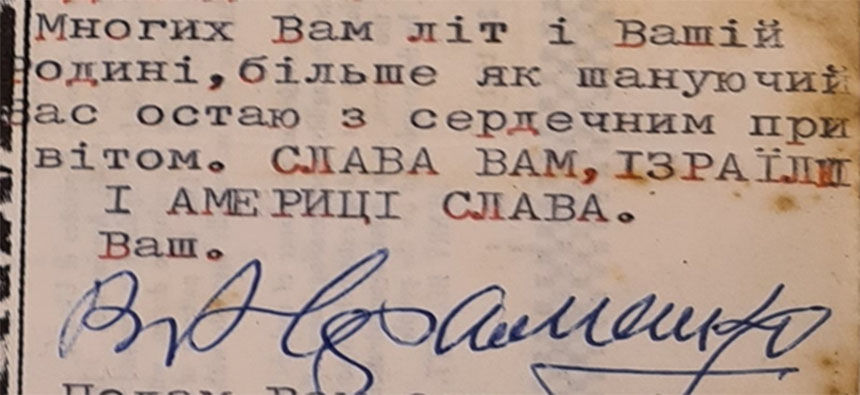
Against the backdrop of the Menten trial, the “Ukrainian topic” was also raised. Knaan gave an interview to the New York Times in late 1976, which sparked a lot of feedback from Ukrainian- American readers. One of them, R. [Rostyslav] Chomiak, from Virginia, wrote to Knaan, sharing his recollections of Nazi atrocities against the Jews in the Lviv ghetto, as well as those of his parents, who rescued Jews from the ghetto. Knaan requested detailed material about this and offered his help with lobbying Yad Vashem to award the title of Righteous Among the Nations to the parents of this Ukrainian American.
In 1977 Knaan went to the United States to look for materials on the topic of Ukrainian-Jewish relations. He wrote to Walter Dushnyck, editor in chief of the Ukrainian Quarterly, who advised him to contact the Ukrainian National Council in Munich for archival materials and personally to Slava Stetsko, who lived in that city. The Knaan archive does not contain replies from these Munich-based addressees; perhaps they never sent a reply to the Israeli journalist.
That same year he wrote a Hebrew-language article entitled “The Roots and Developments of Antisemitism among Ukrainians.” In a letter to Dushnyck, Knaan emphasized the following: “I took up this sad topic sine ira et studio (Latin: “without anger and passion”) as my humble contribution to the idea that the time is ripe for a frank and free dialogue about Jewish-Ukrainian relations. I believe that in the relations between [our] nations, there should not be any undiscussed topics.”
Among the recipients of Knaan’s correspondence were the Shevchenko Scientific Society in New York and the Harvard Ukrainian Research Institute.
An unfinished book
Starting in the late 1930s, Haviv Knaan worked as a freelance journalist for various periodicals. Later he would become a member of the editorial board of Haaretz, the author of ten books, and one of the most famous “gurus” of the Israeli media.
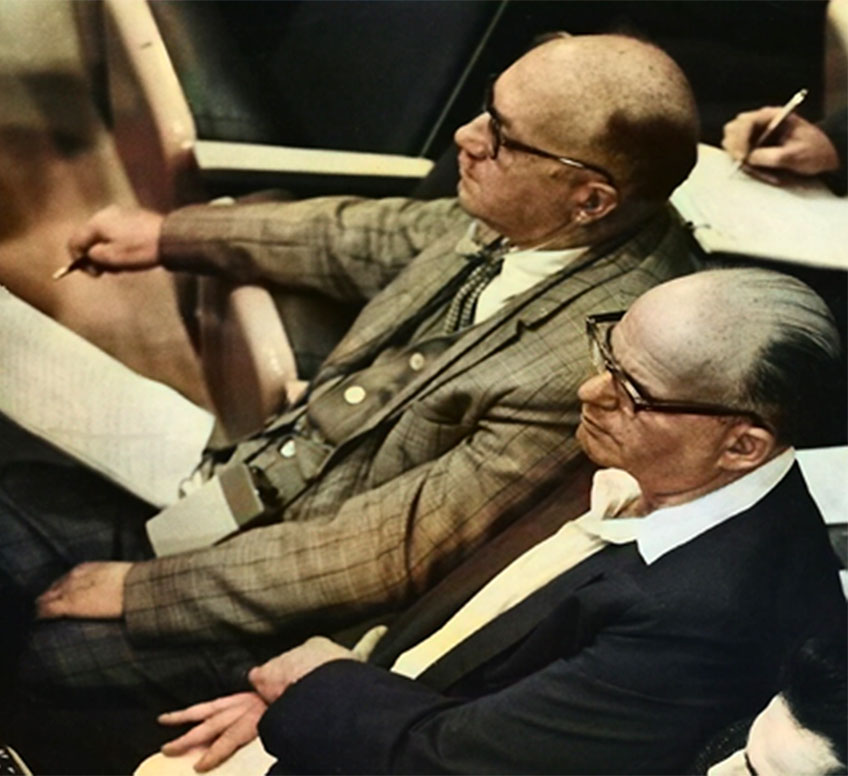
I discovered in the Knann archive over 150 pages of a typewritten manuscript dating to the years 1976–78. It is clear from the text that Knaan was working on a book covering the period of Ukrainian-Jewish relations between the two world wars. In it, he quotes generously from his 1934 interviews with Ukrainian political and civic leaders of interwar Galicia.
For example, the page recounting his meeting with Metropolitan Sheptytsky shows Knaan’s corrections, which convey the direct speech of the head of the Ukrainian [Catholic] Church in support of creating a Jewish state in the Holy Land.
Knaan cites Sheptytsky frequently, including these words of the metropolitan’s: “The creation of a Jewish state will be one of the most wonderful examples for enslaved nations. You will have a small state, but it will be entirely your own.”
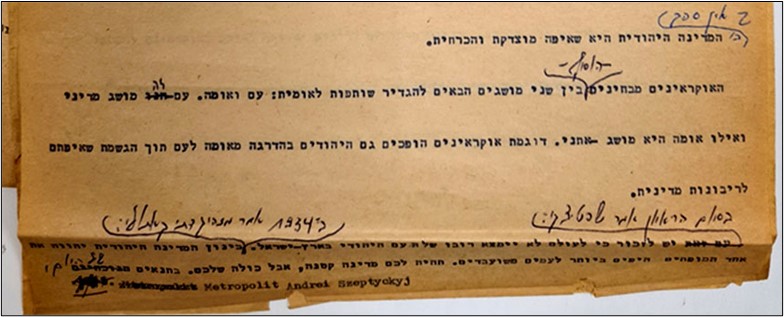
Knaan’s manuscript about Ukrainian–Jewish relations was never published as a book. Initially, in 1935, the Polish security service “strongly recommended” that the interviews with Ukrainians not be published as a separate book. Krumholz was threatened outrightly: “You want to go off to Palestine? Then forget about this book.”
After more than forty years, the journalist Haviv Knaan, now retired, resumed work on a book, the idea for which was born back in the prewar Lviv of his youth. However, for reasons unknown, this book, too, was never published.
I will now return to the beginning of this article. After having studied the Knaan archive, I know all the details of what the head of the Ukrainian Greek Catholic Church stated about the Jewish national movement and the creation of the future Jewish state.
This point of view of the great Ukrainian and distinguished humanist rings true even today. I hope to continue writing on this topic. In the near future, Lieber Krumholz’s interview with Metropolitan Andrei Sheptytsky will be published in its entirety for the first time, with detailed commentaries, on the Ukrainian Jewish Encounter website.

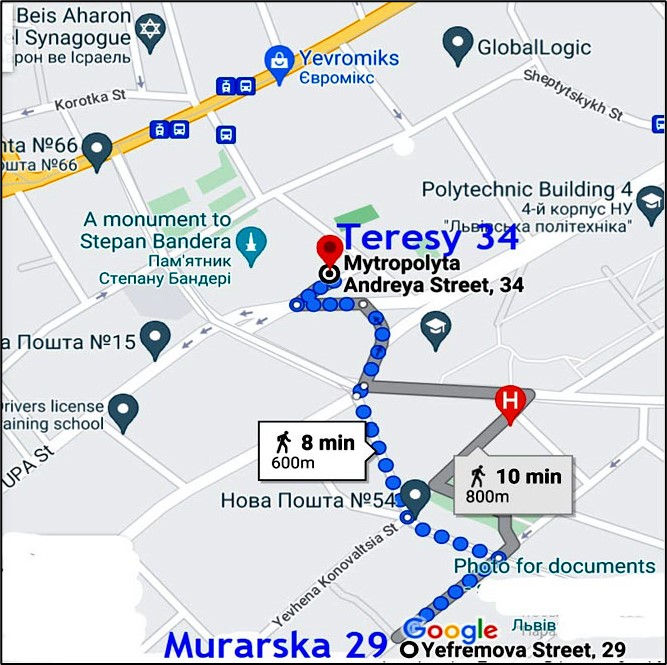
Text, collage, and colorization: Shimon Briman (Israel)
Photographs: Haviv Knaan Collection in the archive of Tel Aviv University; National Archives of the Netherlands; Facebook page of Simi Vidislavski, the daughter of Haviv Knaan.
Translated from the Ukrainian by Marta D. Olynyk.
Edited by Peter Bejger.







